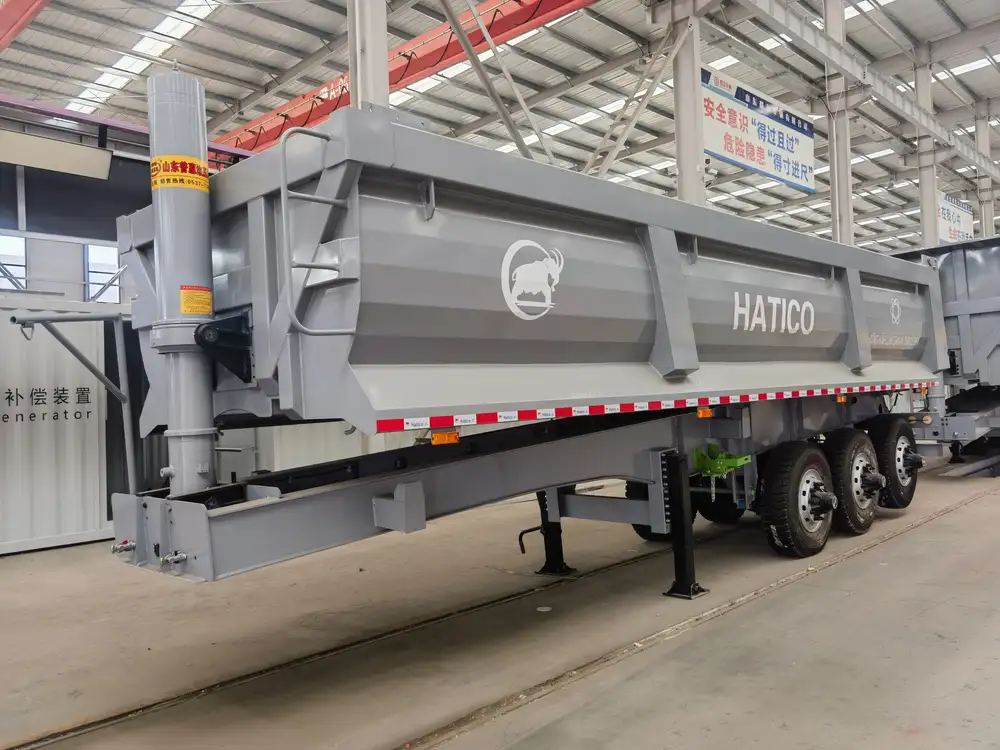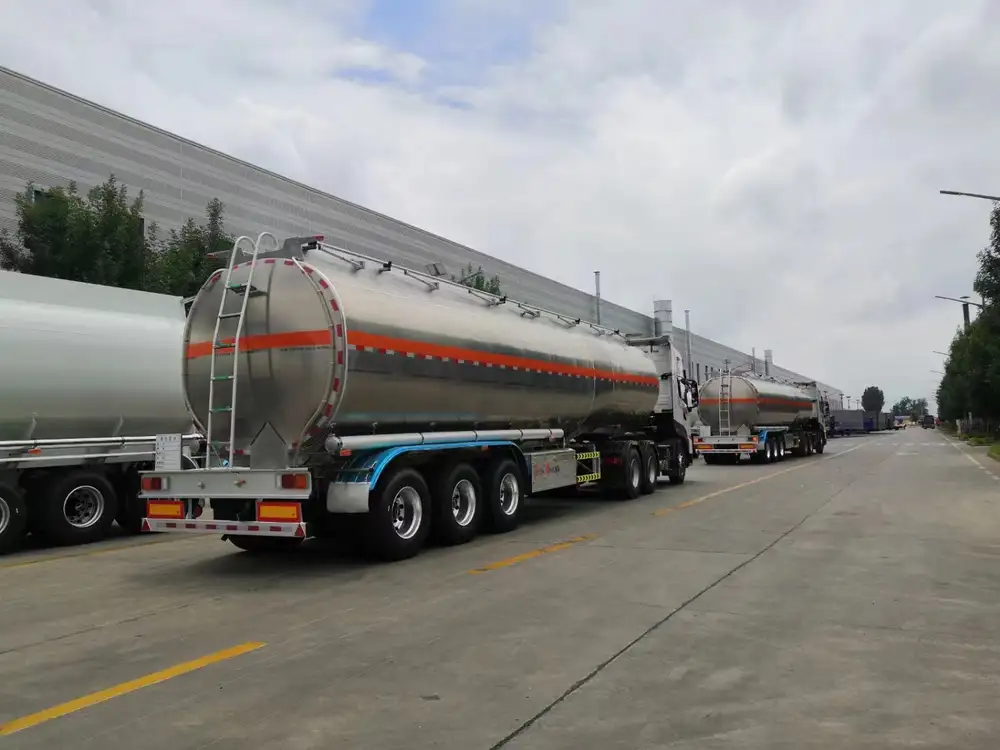Introduction to Skeletal Container Trailers
In the fast-paced world of logistics and transportation, skeletal container trailers have emerged as indispensable assets, especially for businesses requiring efficient cargo movement. These specialized trailers, designed primarily for transporting shipping containers, offer unparalleled flexibility and adaptability in the shipping industry.
What is a Skeletal Container Trailer?
A skeletal container trailer is a lightweight, flatbed trailer specifically engineered for the transportation of standard shipping containers. Characterized by its skeletal structure—essentially a chassis without a full deck—these trailers allow containerized cargo to be loaded and transported seamlessly. They typically feature multiple twist locks, enabling them to secure containers of various sizes, including the standard 20-foot and 40-foot containers.

Key Features and Components
| Component | Description |
|---|---|
| Chassis Construction | Made from high-strength steel or aluminum for durability and reduced weight. |
| Twist Locks | Secure containers firmly to the chassis, ensuring safety during transit. |
| Axle Configurations | Available in tandem, tri-axle, or even quad-axle configurations, catering to load requirements. |
| Suspension Systems | Fit with air or spring suspension for smooth rides and load stability. |
The versatility of skeletal container trailers makes them ideal for a myriad of applications—from intermodal transport to on-site storage solutions.
Advantages of Using Skeletal Container Trailers
Enhanced Flexibility
One of the most significant advantages of skeletal trailers lies in their flexibility. Unlike traditional trailers, which are often restricted in the types and sizes of cargo they can carry, skeletal trailers accommodate various containers, thus optimizing load capacity and minimizing the number of trips required.

Lightweight and Fuel-Efficient
The lightweight design of skeletal container trailers not only enhances fuel efficiency but also increases payload capacity. When transporting goods, every pound saved on the trailer translates to additional cargo. Furthermore, improved fuel economy means reduced operational costs, providing businesses with a competitive edge.
Easy Loading and Unloading
The skeletal design allows for simple loading and unloading of containers, reducing turnaround time at ports and distribution centers. Many skeletal trailers are equipped with hydraulic ramps that facilitate easy access for forklifts and other loading equipment.
Common Applications for Skeletal Container Trailers
Skeletal container trailers cater to various industries and applications:
| Industry | Application |
|---|---|
| Shipping and Logistics | Transporting containers from ports to warehouses and distribution centers. |
| Construction | Moving construction materials directly to job sites. |
| E-commerce | Facilitating quick shipping of goods to and from fulfillment centers. |
| Agriculture | Transporting equipment and materials for farming operations. |

Choosing the Right Skeletal Container Trailer
When selecting a skeletal container trailer, several factors must be considered:
- Type of Cargo: Evaluate the nature and size of the containers to be transported.
- Common Routes: Analyze the terrain and conditions of the routes to determine suspension types and axle configurations.
- Weight Requirements: Understand legal weight limits imposed on your routes when calculating payload capacities.
- Budget Constraints: Weigh the initial investment against potential savings in fuel and time.
Comparison of Leading Brands
| Brand | Key Features | Price Range (USD) |
|---|---|---|
| Brand A | Lightweight, air suspension, customizable | $30,000 – $50,000 |
| Brand B | High durability, multiple axle configurations | $25,000 – $45,000 |
| Brand C | Ergonomic design, best for e-commerce | $28,000 – $48,000 |
Investing in the right skeletal container trailer can enhance operational efficiency and drive business growth.
Maintenance Tips for Skeletal Container Trailers

Regular Inspections
Routine inspections are critical for maintaining the performance and longevity of skeletal container trailers. Key elements to inspect include:
- Tires: Ensure adequate tread depth and proper inflation to maximize fuel efficiency.
- Brakes: Check for wear and proper functionality to ensure safety.
- Twist Locks: Assess for rust or damage to guarantee secure container attachments.
Cleaning and Upkeep
Keeping the trailer clean can help prevent rust and corrosion, particularly in the undercarriage and twist lock areas. Utilize a pressure washer to eliminate dirt and debris, particularly after long hauls.
Scheduled Maintenance
Establish a maintenance schedule that incorporates periodic checks, replacements of worn parts, and fluid changes. Engaging professionals for these tasks ensures that the trailer remains in optimal working condition.

Regulatory Compliance for Skeletal Container Trailers
Navigating the regulatory landscape is crucial for any business operating skeletal container trailers. Various laws and standards govern the use of these trailers, including:
- Weight Limits: Compliance with local and federal weight restrictions is critical to avoid penalties.
- Safety Standards: Meeting safety protocols for the operation and transportation of goods is non-negotiable.
- Transport Permits: Depending on the region, additional permits may be required for transporting oversized containers.
Understanding and adhering to these regulations can streamline your operations, reduce the risk of fines, and enhance your organization’s reputation.
The Future of Skeletal Container Trailers
As the logistics industry evolves, skeletal container trailers are expected to integrate advanced technologies to improve efficiency and safety. Potential advancements include:
- Telematics: IoT (Internet of Things) integration for real-time tracking, predictive maintenance, and route optimization.
- Lightweight Materials: The adoption of advanced materials, such as carbon fiber composites, can further enhance payload capacities.
- Autonomous Systems: While still in development, the use of autonomous driving technology in trucking could revolutionize transportation logistics.
Conclusion
In a competitive landscape where efficiency, flexibility, and cost-effectiveness are paramount, skeletal container trailers emerge as crucial assets for any logistics or transportation business. With their versatility and benefits, these trailers ensure that businesses can adapt to the ever-changing demands of the industry while maximizing productivity and profitability. By choosing the right skeletal container trailer and adhering to maintenance and regulatory practices, companies can position themselves for success in a dynamic market landscape.
Embrace the future of transportation by investing in high-quality skeletal container trailers, ensuring you remain a step ahead in the logistics game.



